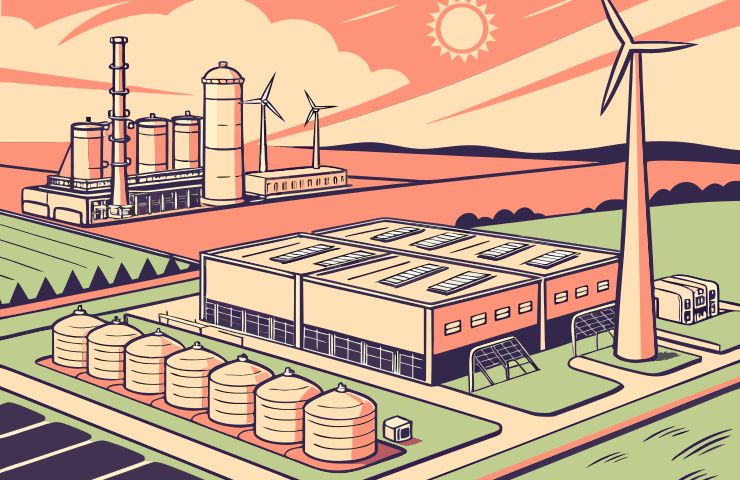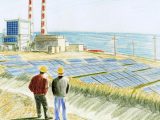
Hydrogen Production Scales Up with Shell’s Renewably Powered REFHYNE 2
November 20, 2025Have you ever paused to think about what it takes to give a huge refinery a carbon-cutting makeover? Well, at Shell’s Energy and Chemicals Park Rheinland—just outside Cologne in North Rhine-Westphalia—REFHYNE 2 is about to show us the ropes.
A Tenfold Leap in Electrolysis
Back in 2021, REFHYNE 1 proved you could churn out green hydrogen with a 10 MW PEM electrolyser powered by renewable energy. But let’s face it: in hydrogen production, size matters. Enter REFHYNE 2—a full-scale, 100 MW monster from Linde Engineering. It uses polymer electrolyte membrane electrolysis to split water into ultra-pure hydrogen and oxygen at low temperatures, shifting gears as renewable power ebbs and flows. The goal? Roughly 16,000 tonnes of green hydrogen a year—enough to swap out loads of grey hydrogen in refining and even fuel transport and chemical applications.
Powering Up with PPAs
An electrolyser doesn’t run on wishful thinking—it needs juice. Shell locked in two long-term renewable power purchase agreements (PPAs) to keep REFHYNE 2 humming. A third of the electricity comes from Nordsee One, a 332 MW offshore wind farm run by Northland Power and RWE under a fresh five-year deal. The rest flows in from Solarkraftwerk Halenbeck, a solar PV outfit with a 10-year, subsidy-free PPA—one of the first in German industry. Balancing wind and solar smooths out seasonality and weather hiccups, making sure the electrolyser sees a steady, zero-carbon supply.
Why Scale Matters
Heavy hitters like steel mills and refineries are huge CO₂ emitters. Green hydrogen is the ace for tough-to-decarbonize processes—think high-temp heat or ammonia production. But getting industrial decarbonization done on the cheap means ramping up volumes and locking in low-cost power. REFHYNE 2 is the proof in the pudding: a bigger electrolyser, longer PPAs, tried-and-tested tech, and an eye on squeezing out every ounce of efficiency.
Regional Transformation
North Rhine-Westphalia isn’t just Germany’s most populated state—it’s historically a coal and heavy industry powerhouse. With 18 million people and a rent-per-capita around $53,500, it’s ripe for big decarbonization moves. REFHYNE 2 sits smack in an industrial park already pivoting away from fossil-based refining. Local universities and research centers are in on the action, feeding the green energy talent pipeline.
Linde Engineering—part of the century-old Linde Group—knows its way around hydrogen infrastructure. From electrolyser stacks to water treatment and control systems, they’re delivering a turnkey solution that plugs right into Shell’s existing steam and power networks. With EU funding giving it a boost, the plant is set to fire up in 2027—proof that public-private teamwork can move mountains.
It’s no coincidence REFHYNE 2 is riding shotgun with the EU’s Horizon 2020 programme. Europe’s eyeing at least 6 GW of renewable hydrogen electrolysers by 2024 and 40 GW by 2030 as part of its hydrogen strategy. Projects like REFHYNE 2 show large-scale electrolysis is both doable and bankable, helping to de-risk future investments and weave a continent-wide hydrogen production network—pipelines, storage, and end-user applications from refineries to transport. Germany’s National Hydrogen Strategy is pouring billions into grants and infrastructure to connect production hubs from the Ruhr to the northern ports. REFHYNE 2 is the first stitch in a tapestry of ‘hydrogen valleys,’ co-locating producers, users, and storage to optimize flows and grid balancing.
Sure, 16,000 tonnes is an eye-catching stat, but it’s more than a headline—it’s a dependable feedstock for Shell’s refineries and a nudge to nearby industries (chemical plants, hydrogen bus fleets, you name it) that green hydrogen is more than a buzzword. Coupled with zero-carbon power, each kilogram knocks out about 10 kg of CO₂ compared to grey hydrogen. Down the road, the site could host blending trials in existing gas pipelines, testing 10–20% hydrogen mix. These hands-on steps chart the course for broader renewable energy integration and help grid operators juggle variable sources through sector coupling.
If REFHYNE 2 lives up to the hype, it becomes the go-to case for industrial decarbonization globally. From Southeast Asia to North America, refiners and chemical makers will dissect its PPA setup, engineering integration, and EU co-funding model. Talks are already buzzing about spin-offs in Spain, the Netherlands, even France’s industrial corridor. Policymakers are eyeing smoother permitting, hydrogen-ready pipeline codes, and incentives for long-term offtakes. And investors? They’re glued to the cost curves—if unsubsidized renewables can catapult green hydrogen into the mainstream, the capital floodgates will open.
By 2027, we’ll have hard numbers on capacity factors, running costs, and integration surprises. Until then, REFHYNE 2 stands as a beacon: an industrial-scale electrolyser powered entirely by renewables, backed by long-term contracts and public grants. It’s the proof refineries don’t need to sit on the sidelines waiting for policy clarity—they can pivot to zero-emission operations now. Keep your eyes peeled to see how Shell uses REFHYNE 2’s playbook for its next green hydrogen bets and how regulators fast-track frameworks to speed things up.
About Shell
Shell is a UK/Netherlands global energy giant founded in 1907, now racing toward net-zero emissions and pioneering green hydrogen. REFHYNE 2 is a major pit stop on its ambitious road to carbon neutrality.
Stay tuned.


 With over 15 years of reporting hydrogen news, we are your premier source for the latest updates and insights in hydrogen and renewable energy.
With over 15 years of reporting hydrogen news, we are your premier source for the latest updates and insights in hydrogen and renewable energy.